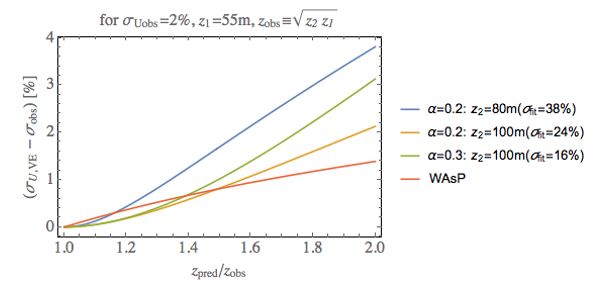These forms have also been tested in separate works, including independent testing of shear extrapolation within the forthcoming IEC 61400-15 uncertainty-standard subgroup.
Following from work on vertical extrapolation via WAsP, and in conjunction with work on the forthcoming IEC 61400-15 standard which treats uncertainty in wind resource assessment, a report has been written (DTU report E-0121, Kelly 2016) which provides formulations for estimation of uncertainties involved in in both WAsP-based and shear-based vertical extrapolation.
The total uncertainty incurred—when winds observed at one height are extrapolated to turbine hub height for wind resource assessment—is given. This includes new derivations for uncertainties associated with determination of (wind) shear exponents, and subsequent vertical extrapolation of wind speeds. The report further outlines application of the theory and results of Kelly & Troen (2014-6) for gauging the uncertainty inherent in use of the European Wind Atlas (WAsP) method for vertical extrapolation; the figure below shows a comparison of uncertainties from these two methods.

Uncertainty in vertical extrapolation of mean wind speed (minus measurement uncertainty ), estimated for shear-exponent method, and for EWA/perturbed-log (WAsP) method. For shear (a)-extrapolation, lower-measurement height taken to be 55m in this plot. Blue: shear-extrapolation, with 38% fitting uncertainty (equivalent to upper height of 80m); gold: shear-extrapolation, for z2=100m; green: shear-extrapolation with z2=100m but a = 0.3; values via Eq. 7 in Kelly (2016).
Red: EWA/perturbed log-law (WAsP default) method.